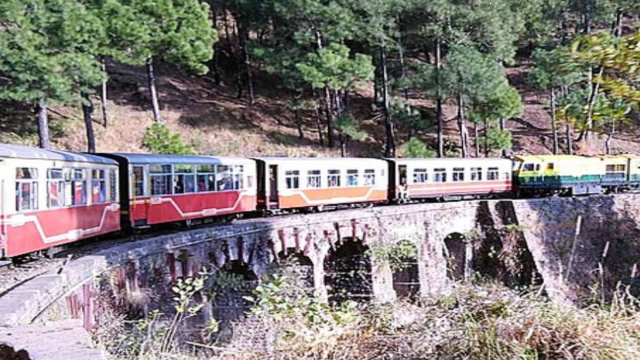Kalka-Shimla Railway
The revered Kalka-Shimla Railway (KSR), over 120 years old and a UNESCO World Heritage Site, has suffered extensive damage due to heavy monsoon rainfall in Himachal Pradesh. A critical section between Jutogh and Summer Hill stations has been washed away, marking the second severe blow this monsoon.
Historic landslides triggered by unsuitable drainage under the Kalka-Shimla national highway already caused disruptions. The railway’s shutdown and ongoing repairs have been further delayed by a catastrophic 55-hour downpour. The KSR, renowned for its scenic beauty and history, was built during the British colonial era. This report delves into its heritage, construction, and current challenges.
What is the current state of the Kalka-Shimla Railway?
Severe monsoon rains in Himachal Pradesh have caused substantial damage to the Kalka-Shimla Railway. The section between Jutogh and Summer Hill stations, vital for the rail network, has been washed away due to heavy rainfall and landslides.
How has the Kalka-Shimla Railway been impacted in the past due to similar situations?
The KSR has faced damage from landslides in the past as well, particularly in 1978 and 2007. However, those incidents resulted in temporary disruptions, with services typically resuming within a few days.
What is the historical significance of the Kalka-Shimla Railway?
The Kalka-Shimla Railway holds cultural and historical value as it was constructed during the British colonial era. It was initially built to facilitate the movement of British officials from Calcutta to Shimla, which was designated as the summer capital of India.
Why was the KSR commissioned and when did it open for traffic?
The British saw the need for a railway connecting Kalka and Shimla to provide a more efficient route to the summer capital. The railway was commissioned after an agreement was signed in 1889. It officially opened for traffic on November 9, 1903.
What are the unique features of the Kalka-Shimla Railway?
The KSR offers a scenic journey through 18 stations, 102 tunnels, and over 988 bridges. It passes through valleys covered with pine, oak, and deodar trees, offering majestic views. The route features numerous curves and turns, including the sharpest at 48 degrees.
How does the recent damage challenge the preservation of Kalka-Shimla Railway’s heritage?
The recent severe damage caused by heavy monsoon rains poses a significant threat to the preservation of the KSR’s heritage. The railway has historically withstood challenges, but the extent of the current damage is unprecedented, leading to concerns about its future restoration and continued operation.
Month: Current Affairs - August, 2023
Category: Places in News Current Affairs



Dr.Cajetan Coelho
August 22, 2023 at 7:26 pmLong live the revered Kalka-Shimla Railway.